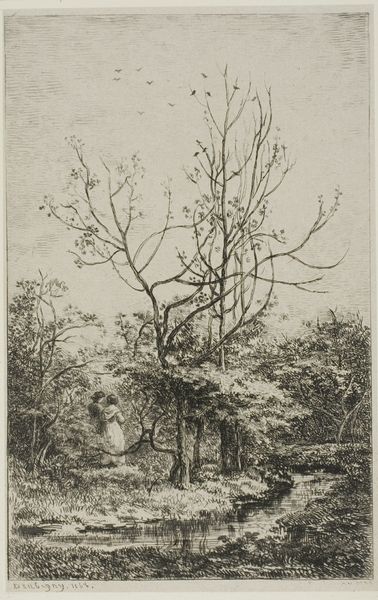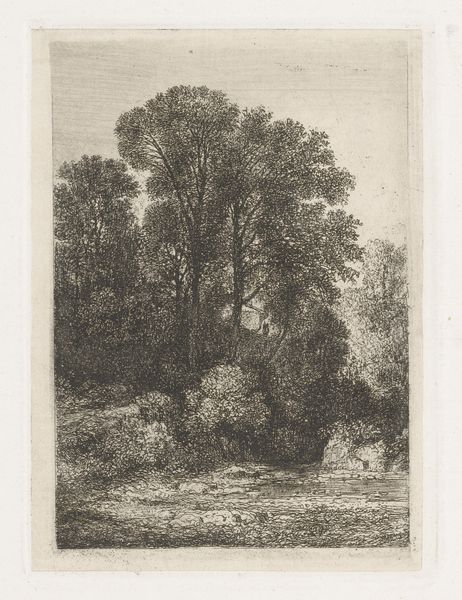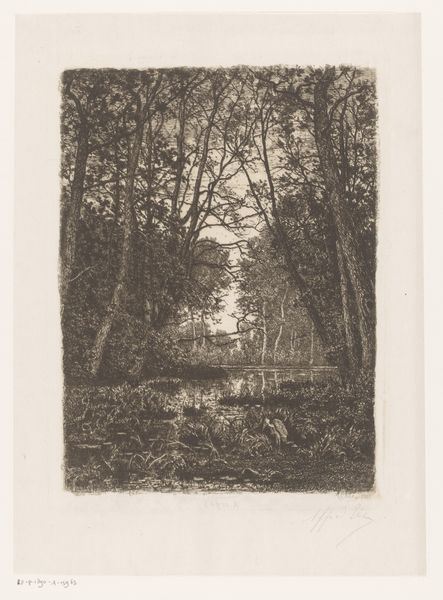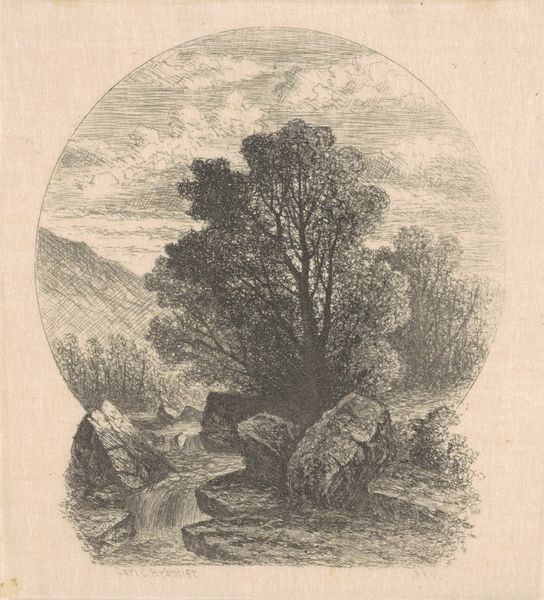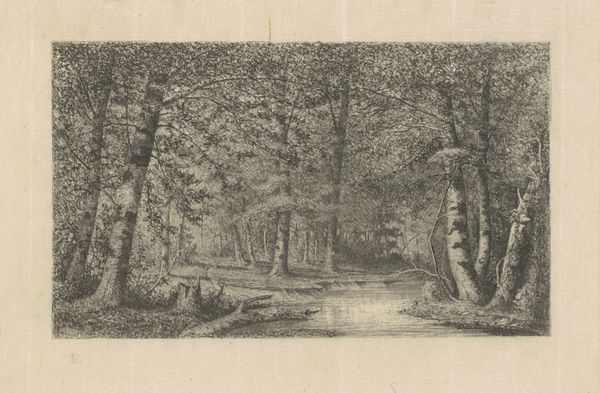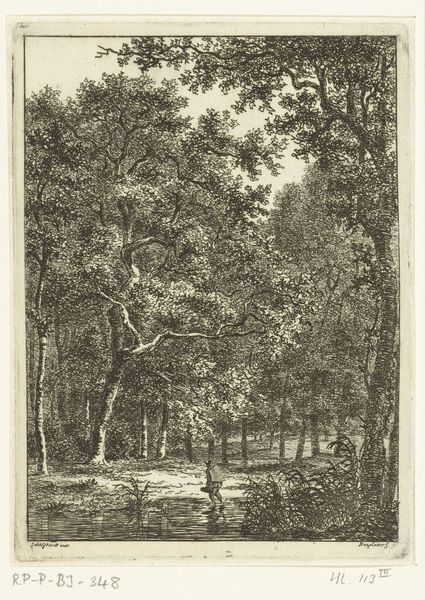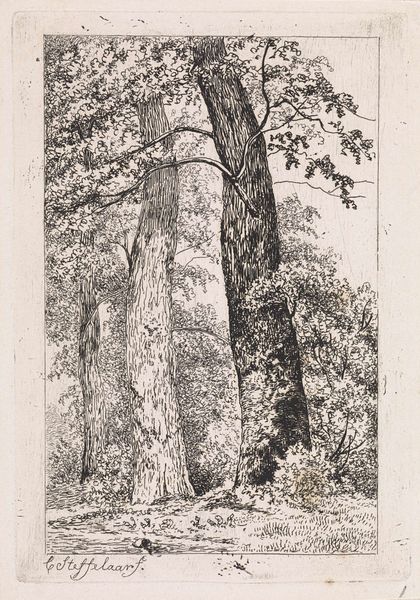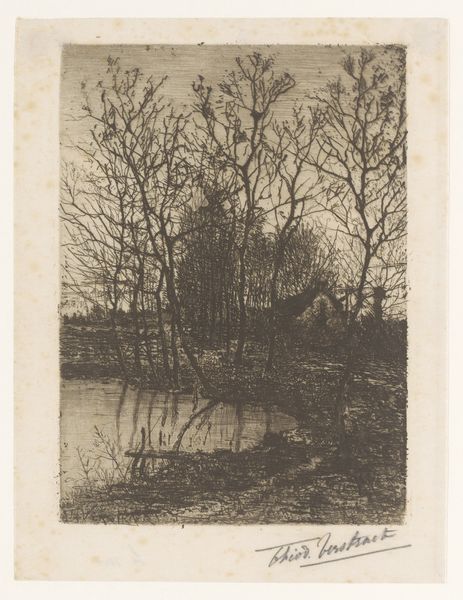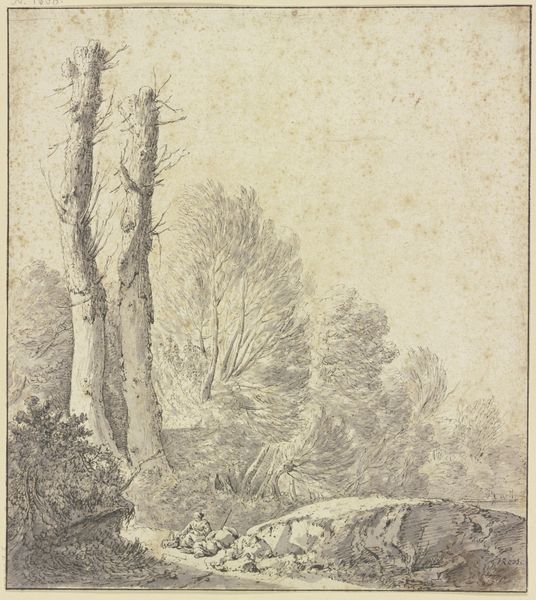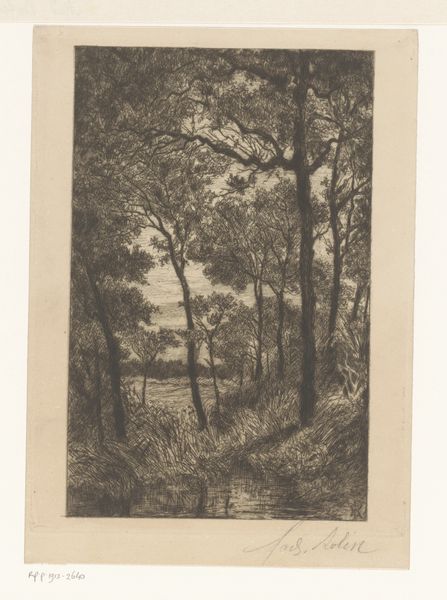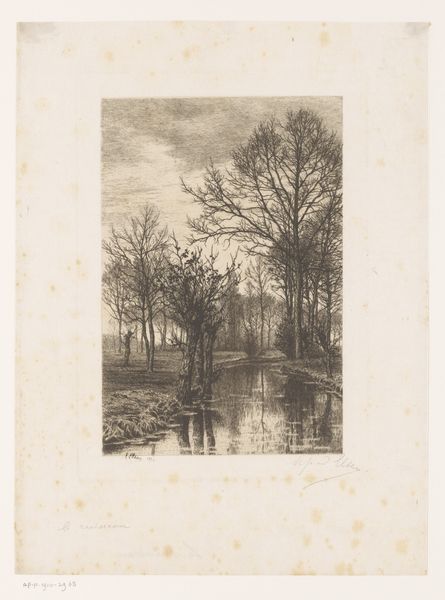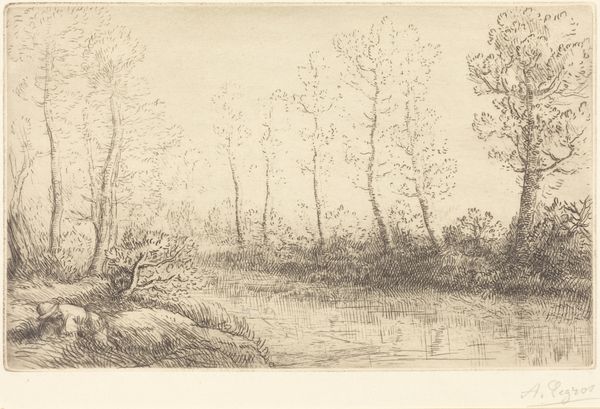
Dimensions: image (irregular): 8.73 × 6.83 cm (3 7/16 × 2 11/16 in.) sheet: 10.16 × 8.1 cm (4 × 3 3/16 in.) support: 30.48 × 24.13 cm (12 × 9 1/2 in.)
Copyright: National Gallery of Art: CC0 1.0
Editor: Here we have Carl Brenner's "On Laurel Creek," an etching from the 1870s or 80s. The oval composition and detailed linework create a tranquil scene. It feels so enclosed, intimate, almost like a secret glade. What symbols or stories do you see embedded in this image? Curator: The stillness of the water is compelling, wouldn’t you say? Consider water as a recurring motif across cultures – a symbol of purification, of the subconscious, of cyclical change. Look closely at the dead log in the water, an ambiguous omen for new growth in nature as well as within one’s self. What feelings does that juxtaposition evoke in you? Editor: It's definitely thought-provoking. I initially saw just a calm landscape, but now I'm picking up on a possible meditation on life cycles...maybe even loss. I didn't realize that that tiny detail could carry so much meaning. Is it common for landscapes to do that? Curator: Frequently. Landscapes invite us to project our own inner states onto the natural world. During the Romantic period, the artist's personal experience of the sublime became an overt theme. The landscape moved beyond mere representation. What echoes of Romanticism do you see here? Editor: The detail in the trees…their reaching branches... maybe suggests that seeking connection? Like there is this universal thing connecting all the elements in the scene. But is it also fair to see how that can mean they are intertwined to some decay? Curator: Exactly! The tangled branches and the starkness of the trees, while beautiful, speak of a hidden wildness, perhaps a reminder of mortality even amidst natural beauty. Considering that Laurel Creek may also reference laurel wreaths – the ultimate prize – the piece transforms into a quest. Do you interpret a sense of attainment, futility, or something else entirely? Editor: Wow, I'm really seeing so much more than just a pretty scene now! Thank you for pointing out all the interconnected symbols within the work, Curator. I can’t wait to keep pondering at what that quest may lead. Curator: The layers of visual information here point to just how deeply imagery, and nature as its own image, connects to our understanding of ourselves.
Comments
No comments
Be the first to comment and join the conversation on the ultimate creative platform.
